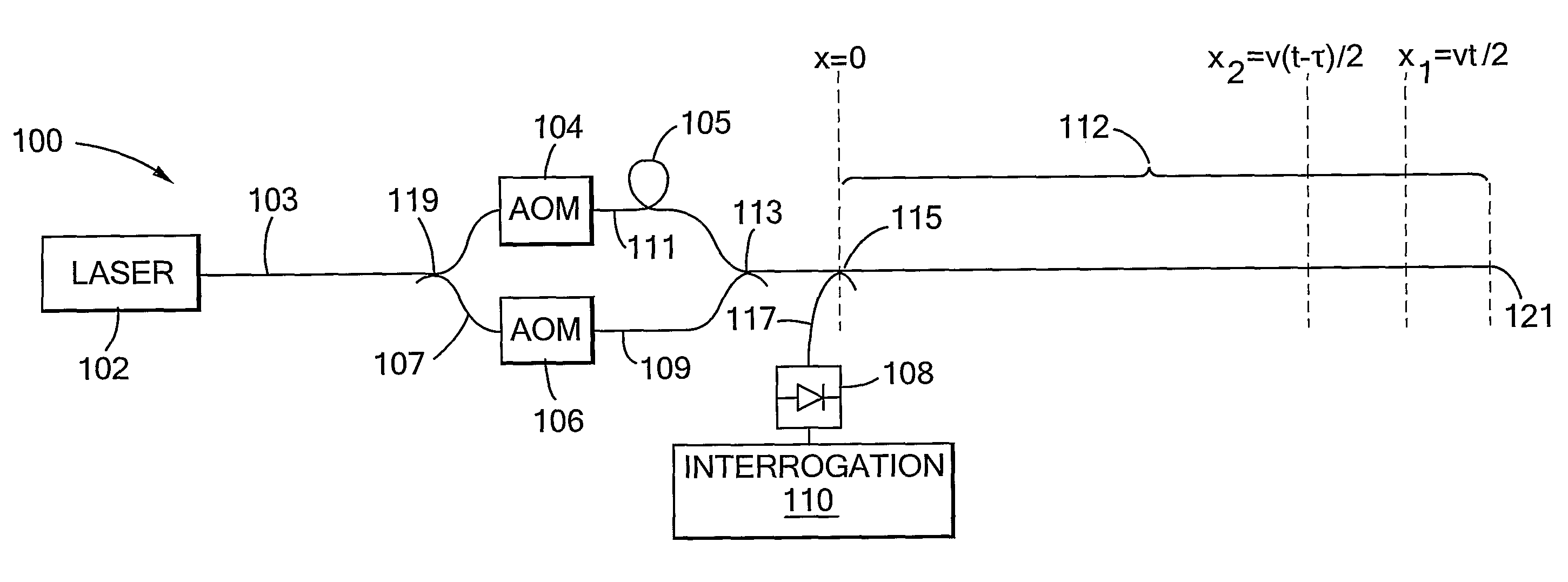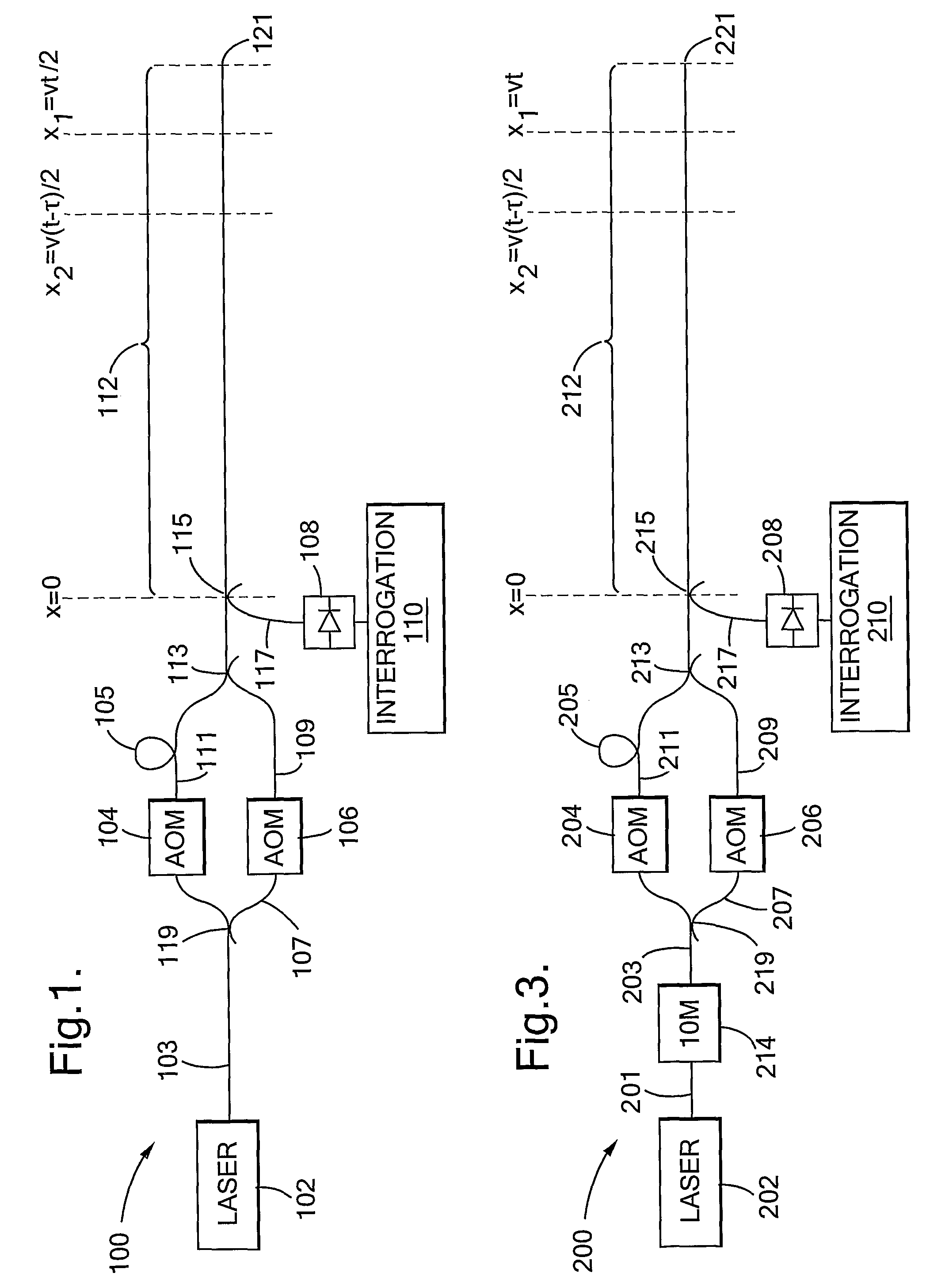Traffic sensing and monitoring apparatus
- Summary
- Abstract
- Description
- Claims
- Application Information
AI Technical Summary
Benefits of technology
Problems solved by technology
Method used
Image
Examples
Embodiment Construction
[0036]In FIG. 1, first example traffic sensing and monitoring apparatus of the invention, indicated generally by 100, comprises a cw laser 102, acousto-optic modulators (AOMs) 104, 106, an optical fibre 111 having a sensing portion 112 with proximal 115 and distal 121 ends, a photodetector 108 (e.g. a photodiode) and an interrogation system 110 arranged to obtain samples of the photodetector output signal, and to process the samples to produce an output signal. The optical output of laser 102 is coupled to an optical fibre 103. An optical fibre 107 is coupled to the fibre 103 by a coupler 119. Fibres 103, 107 are input to AOMs 104, 106 respectively. Outputs of the AOMs 104, 106 are coupled into optical fibres 111, 109 respectively, and fibre 109 is coupled to fibre 111 at a position 113. The optical path length between AOM 104 and the position 113 is greater than that between AOM 106 and position 113 due to a 24 m delay loop 105 of fibre 111. A sensing portion 112 of fibre 111 has a...
PUM
 Login to View More
Login to View More Abstract
Description
Claims
Application Information
 Login to View More
Login to View More - R&D
- Intellectual Property
- Life Sciences
- Materials
- Tech Scout
- Unparalleled Data Quality
- Higher Quality Content
- 60% Fewer Hallucinations
Browse by: Latest US Patents, China's latest patents, Technical Efficacy Thesaurus, Application Domain, Technology Topic, Popular Technical Reports.
© 2025 PatSnap. All rights reserved.Legal|Privacy policy|Modern Slavery Act Transparency Statement|Sitemap|About US| Contact US: help@patsnap.com



